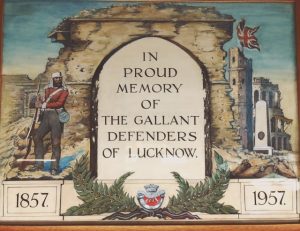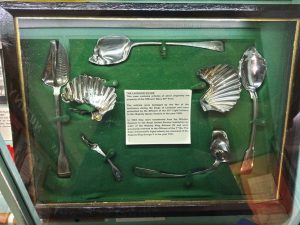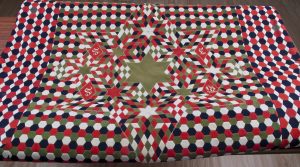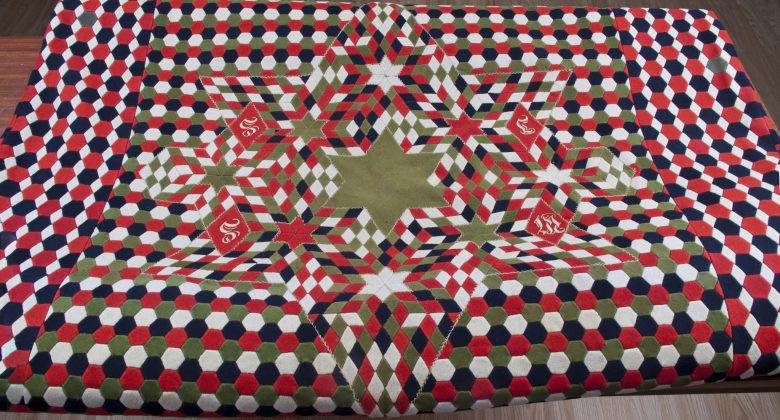British Rule in India – A Growing Unrest

In the mid-19th century there was growing discontent with British Rule amongst Indian people. There was a mounting suspicion that the British were trying to undermine Indian traditional society and they were understandably frustrated with the westernisation of schools and religion. Eventually the Indian troops (sepoys) in the service of the British East India Company, started a rebellion against British dominance.
The mutiny against the British troops began in Meerut and spread to Delhi, Agra, Kanpur, and Lucknow. In India it is often called the First War of Independence.
Discontentment amongst the Indian troops was growing, and it finally reached a breaking point with the introduction of the new Enfield rifle. To load this rifle, the sepoys had to bite the end off the cartridges and the grease used to lubricate them was rumoured to have been a mixture of pigs’ and cows’ fat. To be required to have oral contact with this fat was an insult to both Muslims and Hindus. This was the origin of the term ‘to bite the bullet’.

In April 1857 sepoy troopers at Meerut refused the Enfield cartridges and as punishment they were thrown into jail with long sentences. This punishment incensed their comrades, who rose up and shot their British officers. They then marched to Delhi, where there were no European troops and they joined forces with the local troops there. By nightfall the Mughal emperor Bahādur Shah II had been nominally restored to power. The seizure of Delhi provided a focus and set the pattern for the whole mutiny, which then spread throughout northern India.

A shocking feature of the mutiny was the ferocity that accompanied it. The mutineers commonly shot their British officers on rising and were responsible for massacres at Delhi and Cawnpore murdering women and children.
The Siege of Lucknow
With widespread mutinies underway across Northern India, Commander Lawrence ordered all women and children of Lucknow to take cover in ‘the Residency’, a fortress and the British governmental headquarters.
The Residency was protected by battery positions but was vulnerable because several buildings surrounding it were occupied by rebel snipers and artillery. Despite this precarious position, the troops and civilians managed to hold out under siege conditions for six months.
The relief of Lucknow consisted of two attempts by the British to rescue Sir Henry Lawrence and a contingent of British and Indian troops, along with several hundred civilians, from the centre of Lucknow.
The first relief attempt occurred on September 25 when a force under the command of Major General Sir Henry Havelock fought its way across rebel-held territory to Lucknow. However, by the time he reached the Residency, Havelock had lost so many troops that he considered it too risky to attempt to evacuate the civilians. The relief force joined the garrison, improved the defences, and waited for a second relief.
On November 16, a much larger force approached Lucknow, led by Lieutenant General Sir Colin Campbell. By now, the British soldiers had learned of the massacre at Cawnpore, and no mercy was shown to the rebels.
The British reached the Residency on November 19 and began evacuations. By November 27, the residents had been removed and relocated to safe locations. Campbell would return in March and recapture Lucknow.
The Aftermath
The immediate result of the mutiny was a set of changes and reorganisation to the Indian administration. The East India Company was abolished in favour of the direct rule of India by the British government.
Another significant result of the mutiny was the beginning of the policy of consultation with Indians. The Legislative Council of 1853 had contained only Europeans and had arrogantly behaved as if it were a fully-fledged parliament. It was widely felt that a lack of communication with Indian opinion had helped to precipitate the crisis.
The educational and the public works programme to build better roads, railways, telegraphs, and irrigation was initiated and the traditional structure of Indian society began to break down. From this emerged a more westernised ‘class’ system which developed a strong middle-class with a heightened sense of Indian nationalism.
The Lucknow Quilt

We have a wonderful quilt in the collection, presented to the museum by an ancestor of a family present at the siege who helped to make it. The quilt is understood to have been made during the siege. It is an exquisite piece of crafting made extremely special as it is made up of tiny shapes cut out of the uniforms of the dead British soldiers of the mutiny as well as the cloth from the Residency’s billiard table.

The Lucknow Silver
The silverware on display at the museum was originally from the Officers’ Mess of the 32nd of Foot. You can see that it is warped and damaged by a fire during the siege of Lucknow. The Officers of the 32nd presented the silver to Queen Victoria in 1859. We now have the Silver on permanent display in the Museum.
The Cawnpore and Lucknow collections in the museum are being reinterpreted and re-displayed by our Citizen Curators.

